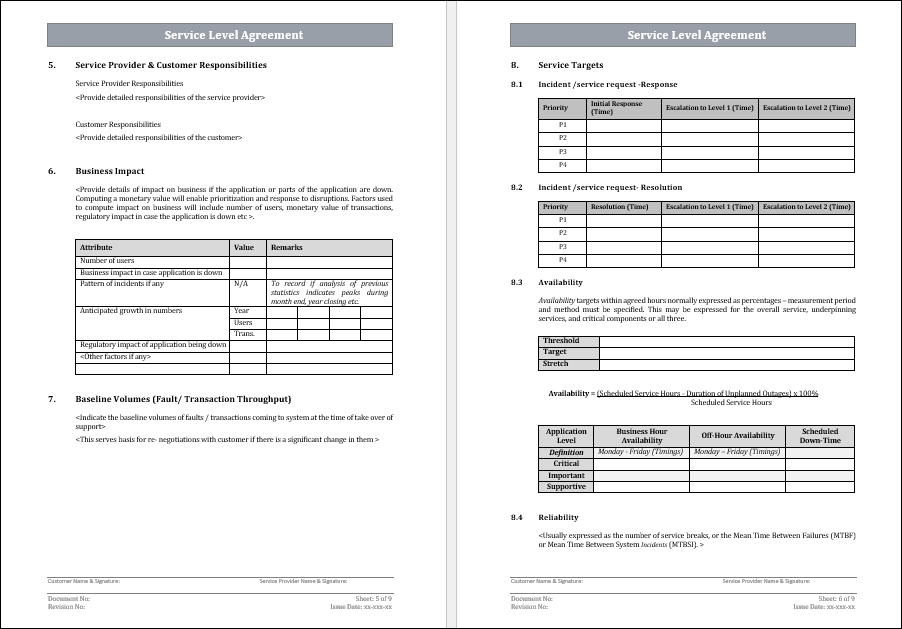 Purpose Of Service Level Agreement Template
Purpose Of Service Level Agreement TemplateA Service Level Agreement (SLA) Template in IT Governance is a standardised and comprehensive agreement that defines the terms, expectations, and commitments of a service provider and its customers or stakeholders. This template serves as the foundational agreement, including the scope of services, performance metrics, both parties' responsibilities, and methods for issue resolution and escalation. It is critical for aligning IT services with business objectives, ensuring clarity, accountability, and openness. SLA templates promote better communication, increase service quality, and provide a framework for continual review and improvement in the field of IT governance by setting measurable criteria and benchmarks.
 Purpose Of Service Level Agreement Template
Purpose Of Service Level Agreement TemplateA Service Level Agreement (SLA) template is an important part of IT governance because it creates a legal and written agreement between service providers and their clients or users. The fundamental goal of a SLA in IT governance is to define and convey the expected levels of service quality, performance, and availability for the IT services offered. This document serves as a contractual commitment, outlining particular KPIs, responsibilities, and expectations, ensuring that users understand what they may anticipate and what the IT department is responsible for in terms of service delivery.
Step 1: Define Clear Objectives and Scope
Step 2: Identify Key Performance Indicators (KPIs) and Metrics
Step 3: Establish Reporting and Monitoring Mechanisms
Step 4: Communication and Training
Step 5: Establish Escalation Procedures
Step 6: Regular Review and Continuous Improvement

1. Clarity and Understanding: Clarity and Understanding: An SLA template is a standardised and recorded agreement that clearly defines the expectations, roles, and duties of both the service provider and the service recipient.
2. Improved Communication: The SLA is a communication tool that promotes transparency between the IT department and stakeholders.
3. Accountability and Performance Measurement: The SLA template contains particular Key Performance Indicators (KPIs) and metrics for measuring service performance.
4. Risk Mitigation: SLA templates frequently incorporate procedures for issue resolution and escalation pathways. This helps to address problems quickly and efficiently, reducing the impact on service quality and consumer pleasure.
5. Efficient Resource Allocation: Understanding service requirements and expected performance levels allows IT teams to properly allocate resources to meet demand.
6. Continuous Improvement: The SLA sets up a framework for periodical reviews and performance evaluations. The feedback from these reviews can be utilised to identify areas for improvement, refine service delivery methods, and improve the overall quality of IT services.
The Service Level Agreement (SLA) template is an essential tool for IT governance, establishing a collaborative and transparent relationship between service providers and recipients. The Service Level Agreement (SLA) serves as a model for good service delivery by encapsulating explicit expectations, defining responsibilities, and establishing measurable indicators. There are numerous benefits, including improved communication, accountability, and performance monitoring. The SLA template prevents misunderstandings and provides legal protection through full documenting of service terms and conditions.